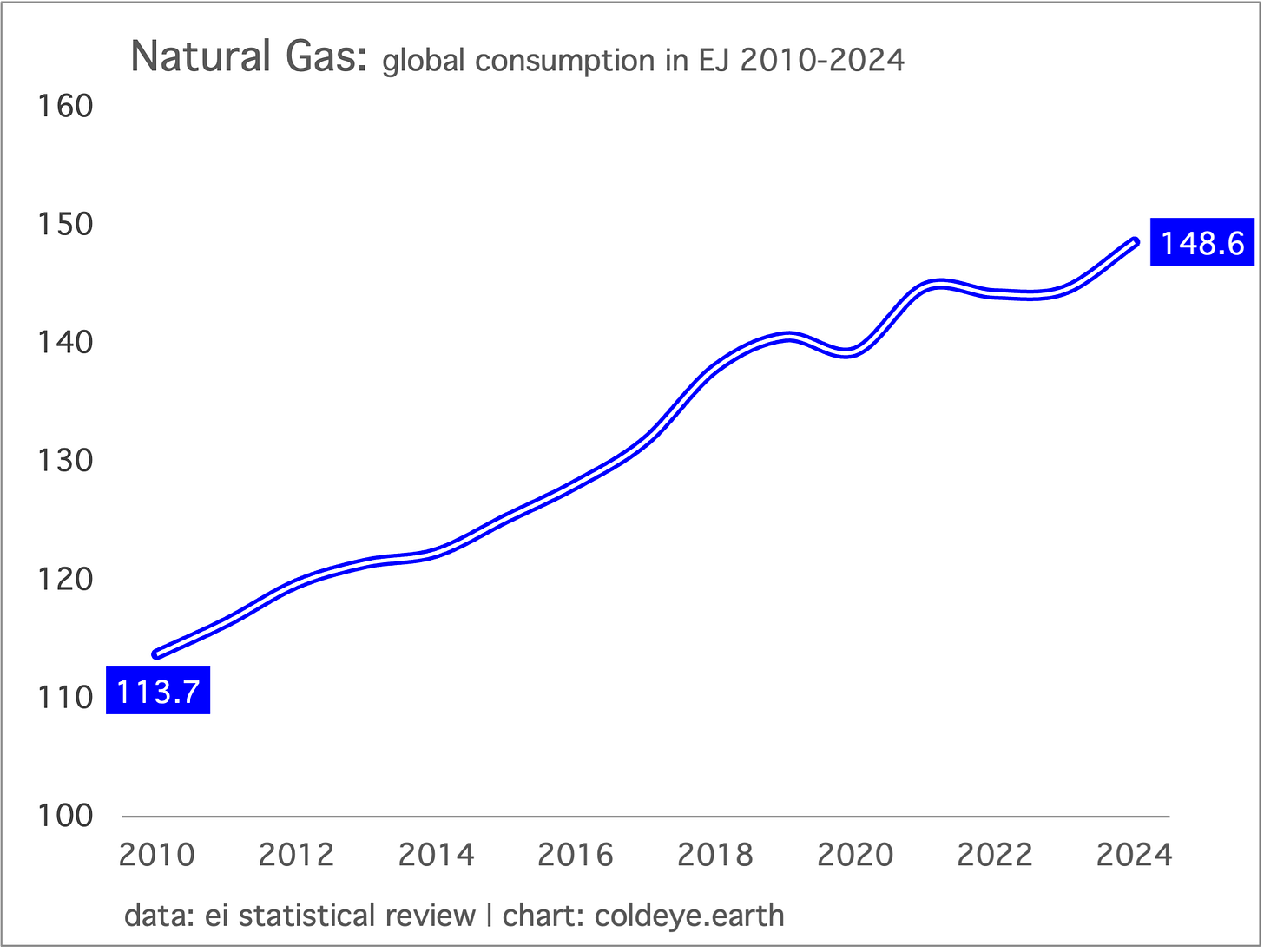Autumn Chartbook
Monday 15 September 2025
Adoption of natural gas as a way to lower carbon emissions is a far more problematic strategy than acknowledged, and is leading the world to a very suboptimal outcome. Over the past decade, global growth of natural gas demand has plowed along at an average rate of 2% per annum—more than enough to create a vast, new path dependency on this fossil fuel. Advocates are correct when they assert that much of this adoption is replacing coal. They are even more correct when they claim a portion of this new build actually serves to boost adoption of wind and solar, given that natural gas power generation nicely dovetails with variable renewables, allowing them to achieve higher levels of penetration. So what could possibly go wrong with the strong adoption of natural gas?
The problem is path dependency and how, as we’ve learned over time, the incumbent energy base has far more control over the pace of energy transition than the adoption of renewables. Every coal plant replaced by a new natural gas plant represents a terminal, one-time emissions gain that can’t be repeated. Afterwards, however, this new natural gas capacity then converts to the same long-term obstruction represented by the previous coal plant—suppressing the potential growth of wind, solar, and storage. Why? Because, as many still don’t fully understand, wind and solar and batteries compete strongly for new generation, but cannot overtake fossil fuel generation unless the capacity is old, and already near retirement. Finally, it needs to be highlighted that the world is not getting its coal problem under control at all. Total coal use originally peaked in 2014, flattened for six or seven years, and is now once again making new all-time highs.
Keep reading with a 7-day free trial
Subscribe to Cold Eye Earth to keep reading this post and get 7 days of free access to the full post archives.



